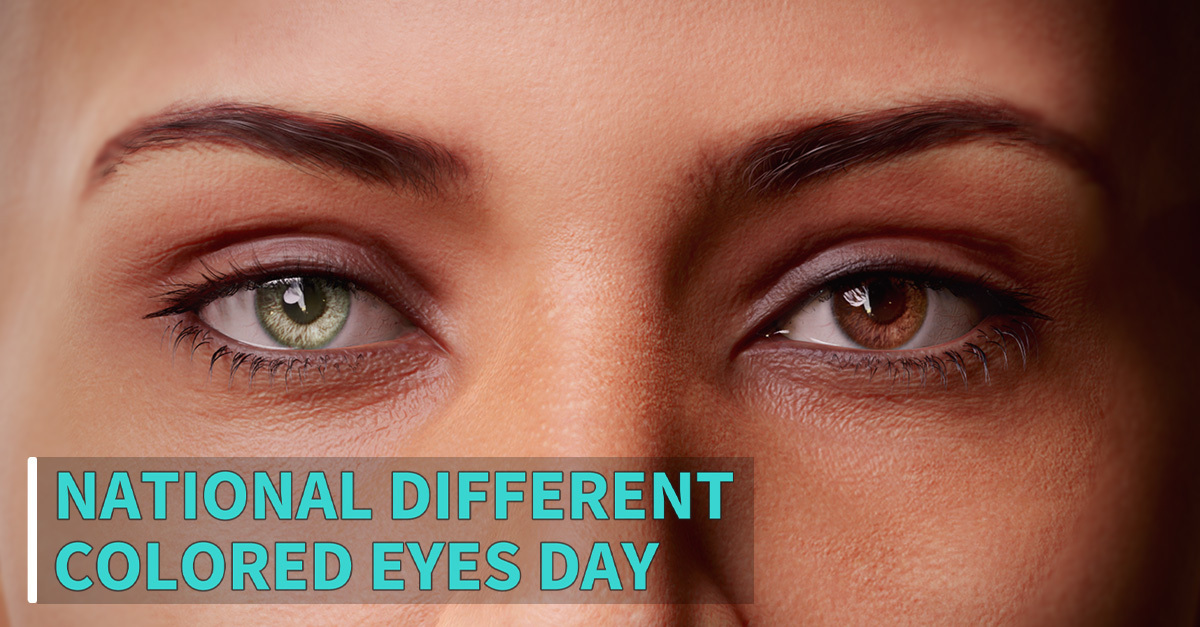
July 12th marks National Different Coloured Eyes Day. Let’s explore where your eye colour comes from and how individuals can have different coloured eyes.
The colour of your eyes comes from the iris. Located posterior to the cornea and anterior to the lens, the iris is a muscular, ring-shaped structure that surrounds the pupil. The iris divides the anterior and posterior chambers of the eye. The main function of the iris is to change the size of the pupil which varies the amount of light let into the eye. The iris itself also blocks light from penetrating into the posterior chamber of the eye.
The colour of the iris is determined by genetics, the amount of pigment present and how the light is absorbed or reflected by the iris. The pigment that can affect the colour of the eye is melanin which is produced by melanocytes. The iris usually has a flecked appearance and that is due to the irregular distribution of the pigmentation.
Eye colour can range from blue to brown with colours in between such as green, grey and hazel. Irises with little melanin pigmentation are light blue in colour while those with the most melanin are brown in colour. Blue eyes appear this colour as the lack of pigment causes the light to scatter when it hits the iris.
Specific eye colour is unique to each person, much like your fingerprint. Brown eyes are the most common in the world with blue eyes being the second most common. A very rare eye colour type is called heterochromia. This is when there are different colours in an individual’s irises. Less than 1% of the world population have heterochromia.
There are three types of heterochromia. Complete heterochromia means each iris is a different colour. For example, one blue eye and one green eye. Segmental heterochromia means one iris is segmented into different colours. Finally, central heterochromia means the outer ring of the iris is a different colour to the inner ring.
Heterochromia can be caused by genetics, disease or injury. Heterochromia can be congenital or acquired later on in life. Usually, heterochromia does not cause any problems but very rarely it can be a symptom of a medical condition.
Heterochromia is a unique condition and we celebrate it today on National Different Coloured Eyes Day! To explore the anatomy of the iris and the eye, check out the Eye Detailed Model in Complete Anatomy.
